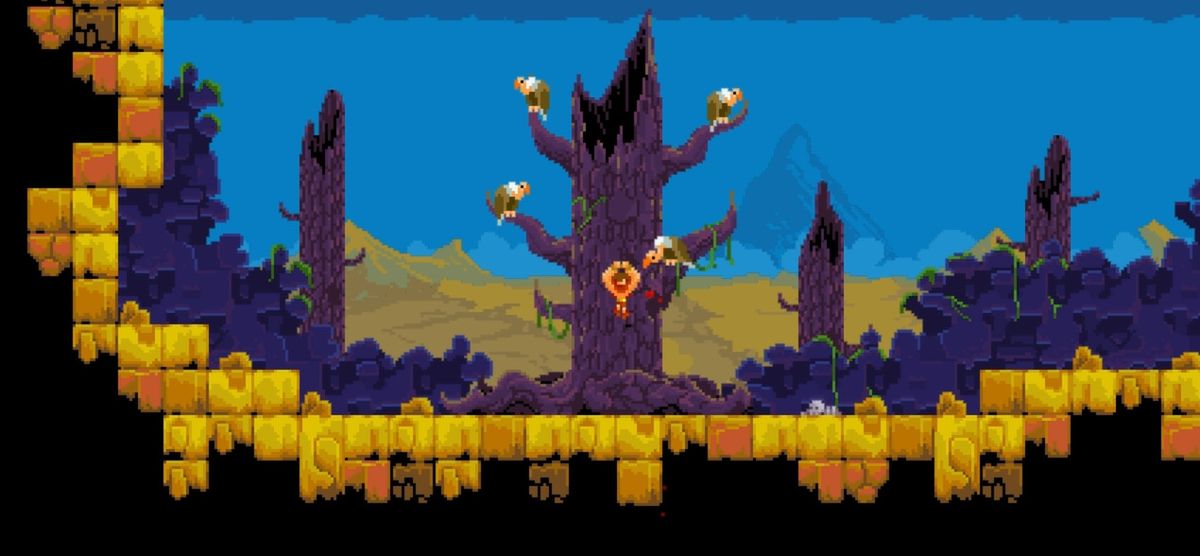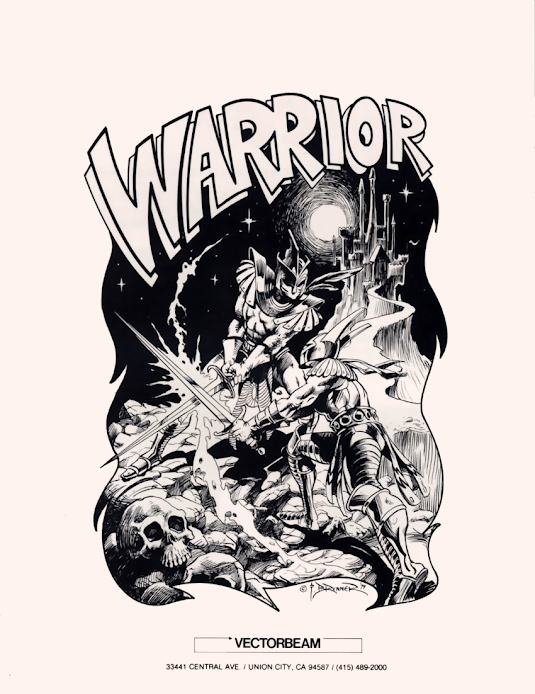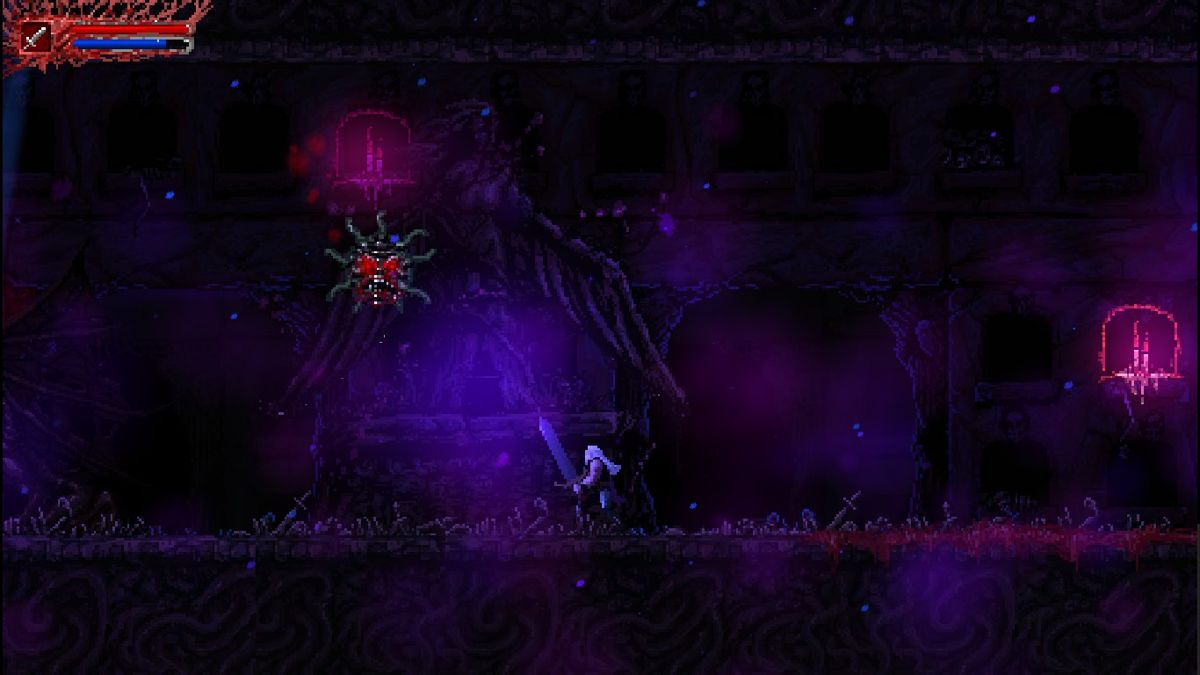Tiny Barbarian opens with a scene of our hero, the Tiny Barbarian, under the player's control as he fights enemies on all sides. You can battle for a while but eventually you'll be overwhelmed and the game transitions to Tiny Barbarian hung on a tree with vultures looming over him. One gets too close and Tiny Barbarian grabs it with his teeth and shakes the creature until it's dead, then he busts loose and charges off to get revenge. The scene directly homages Conan's crucifixion in A Witch Shall Be Born, although the visualization of it and the following level, in which you battle snake cultists and a pair of villains that strongly resemble Thulsa Doom and Dagoth, indicates that the creator of the game was thinking more of the Conan movies than Robert E. Howard's original story. Tiny Barbarian's own design, with his brown hair and comically top-heavy physique, resembles Arnold Schwarzenegger more than the black-haired and pantherish look of Howard's creation.
The second level features Tiny Barbarian hacking his way through a lost city inhabited by giant bees and ape-like people with advanced technology. If this is inspired by a specific story, the source eludes me. The third level pays homage to the original Castlevania as the hero travels through a strange town at night and enters a floating tower.
Level four sees the hero abducted by aliens while battling Lovecraftian cultists, leaving it to his girlfriend to put on a spacesuit and grab a ray gun to rescue him in a goofy tribute to Barbarella. Midway through, she rescues him and they team up for the rest of the level in a nice changeup to the gameplay.
The most interesting level to me and what initially brought the game to my attention is a bonus level directly based on Robert E. Howard's The Frost Giant's Daughter. Tiny Barbarian sees and becomes enamored with an icy woman floating through the air and battles his way across the snows until she lures him into her trap: her two giant brothers.
As a game, it's fun but can also be frustrating. Like many similar retro-styled games, there's a masochistic, trial-and-error aspect to the gameplay that is intended to evoke the "Nintendo hard" difficulty of 1980s games but is probably even more difficult in direct comparison. At the least, there's a trade-off: Tiny Barbarian gives you infinite chances to overcome it while jacking up the challenge compared to older games that provided limited lives and continues and usually had the difficulty somewhat increased to ensure it would be too hard to clear on a daily rental.
The graphics are appealing enough even if they aren't dazzling to look at. Games in the 8- and 16-bit eras were primarily concerned with increasing the size of the characters because it was a real technical limitation to be overcome back then. This minor trend in modern games of miniaturizing the characters reflects a different, more self-imposed limitation, one of trying to see how small one can go while still maintaining a sense of clarity and style.












